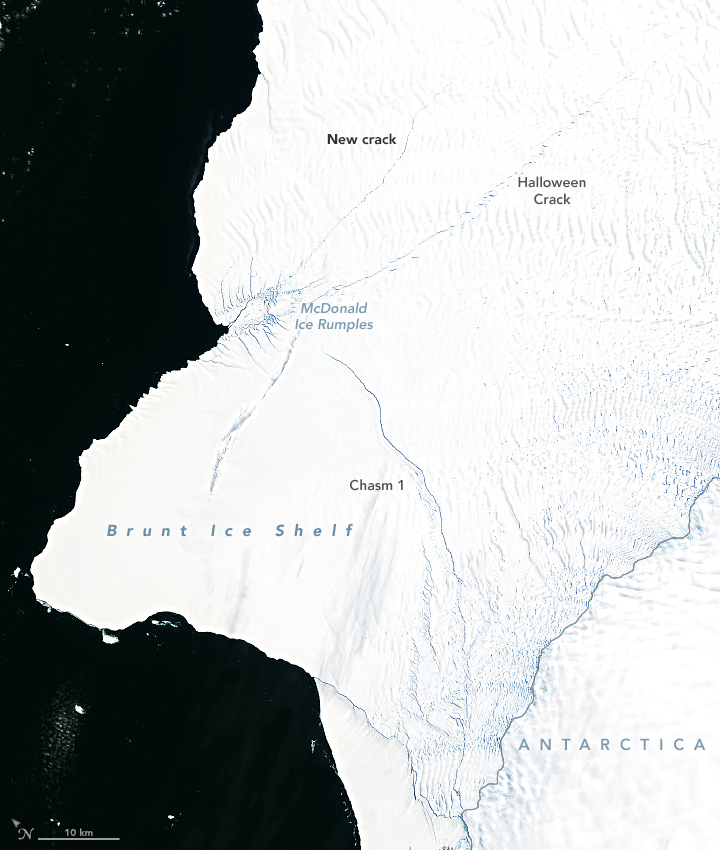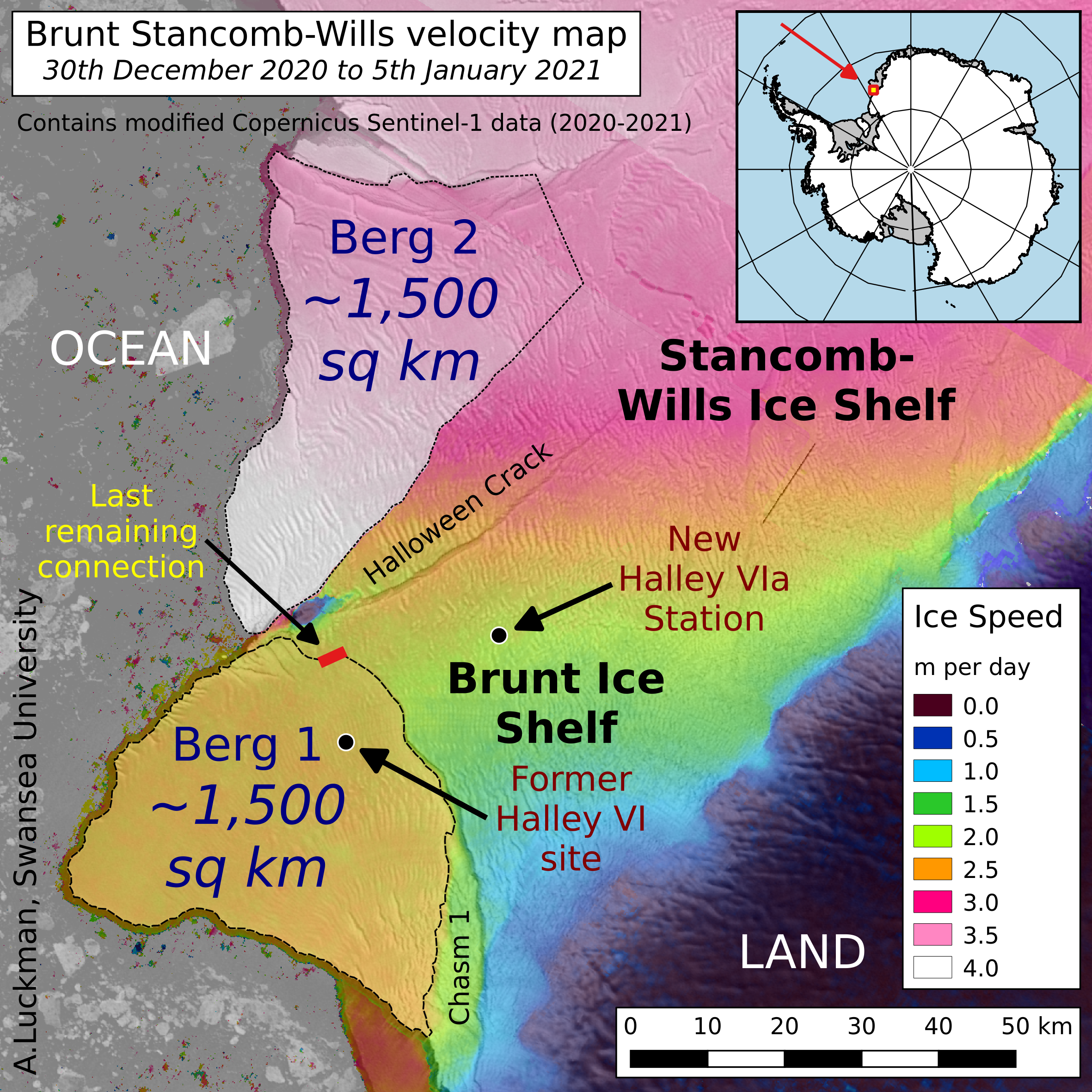Now that we’re passing midsummer, how are the icebergs going these days? Looks like good news all around.
Biggest iceberg ever recorded was in 1956, which was a while ago now. It was 333 * 100 km
B-15 is the biggest iceberg from satellite photography, back in the year 2000. It was 295 * 37 km
D-28 is the largest iceberg from the year 2019. It was 62 * 30 km.
The British Halley base was moved in 2016-2017 to move off an incipient iceberg. Brunt Ice Shelf.
January 12, 2021. https://earthobservatory.nasa.gov/images/147799/brunt-breaking-up-with-antarctica-this-year
Two years after the Brunt Ice Shelf seemed poised to produce a berg twice the size of New York City, the ice is still hanging on. But the calving of one, maybe two, large icebergs is inevitable. The question is: when? Ice scientists are watching to see if a rapidly accelerating crack will cause the shelf to rip apart before the sunlit summer season ends.

In late October 2016, the “Halloween crack” appeared and rapidly extended eastward. In early 2019, Chasm 1 in the south extended northward as fast as 4 kilometers per year. Now, a new crack is zippering across the shelf north of the Halloween crack, far faster than the fissures to its south. The biggest growth just occurred recently. Between November 18 and December 22, 2020, the rift grew in length by about 20 kilometers. Then it jogged toward the north and grew an additional 8 kilometers by January 12, 2021.
So unpredictable!
7 Jan 2021. https://www.bbc.com/news/science-environment-55573397
The Halley station has reopened.

The Brunt ice shelf was not the largest incipient iceberg last time I looked. It was the second largest. What was the largest? Thwaite’s glacier? No.
Perhaps it was D-28. It must have been.
6 Feb 2021. https://www.maritime-executive.com/article/world-s-largest-iceberg-breaks-apart-menacing-southern-ocean
The A-68A iceberg that was threatening South Georgia Island has broken up.
The British Forces South Atlantic Islands reports that as the current around South Georgia spun the iceberg, a large section broke off. A new section estimated to measure approximately 55 square miles calved from the northern section of A68a and has now been designated A68d. It is currently approximately 30 nautical miles away from South Georgia.
3 Feb 2021. https://phys.org/news/2021-02-a-68a-iceberg.html
Satellite images have revealed that the once colossal A-68A iceberg has had yet another shattering experience. Several large cracks were spotted in the berg last week and it has since broken into multiple pieces. These little icebergs could indicate the end of A-68A’s environmental threat to South Georgia. New images, captured by the Copernicus Sentinel-1 mission, show the iceberg suffered further damage as a new iceberg calved from A-68A just last week. The smaller slab, promptly named A-68G by the US National Ice Center, measures approximately 45 km in length and around 18 km at its widest point.
